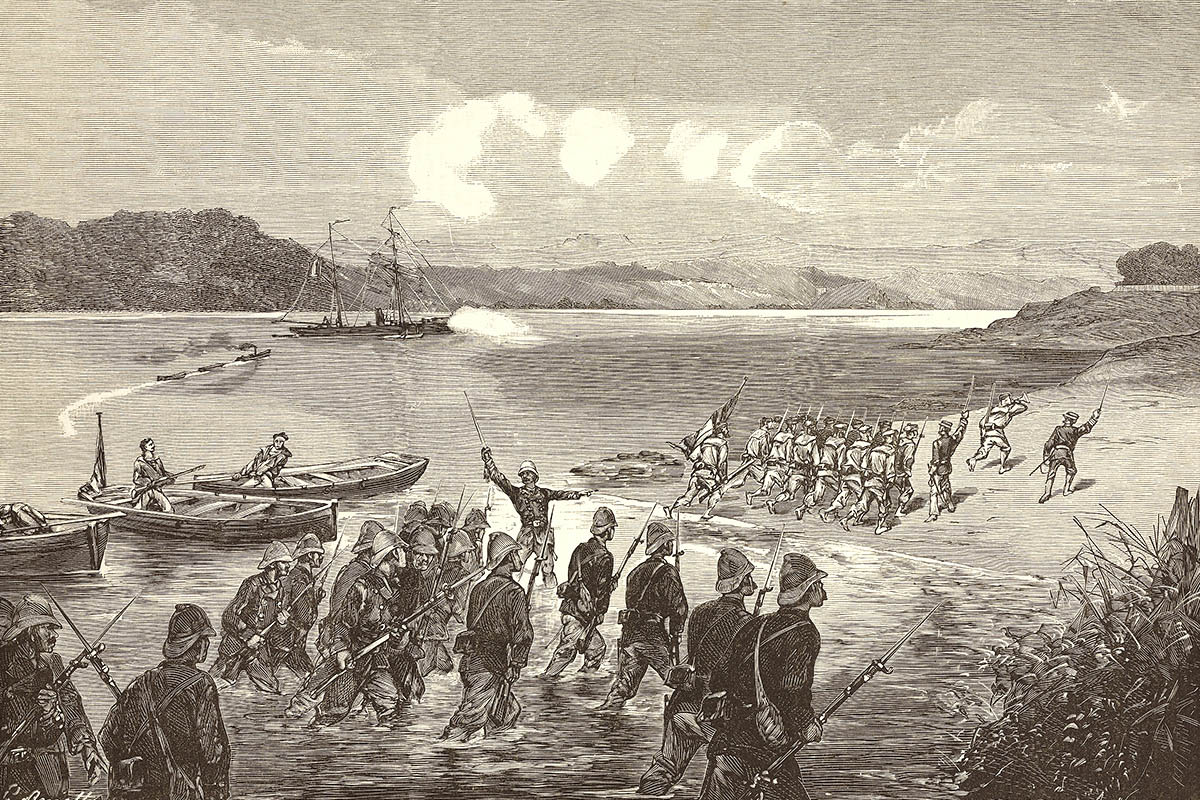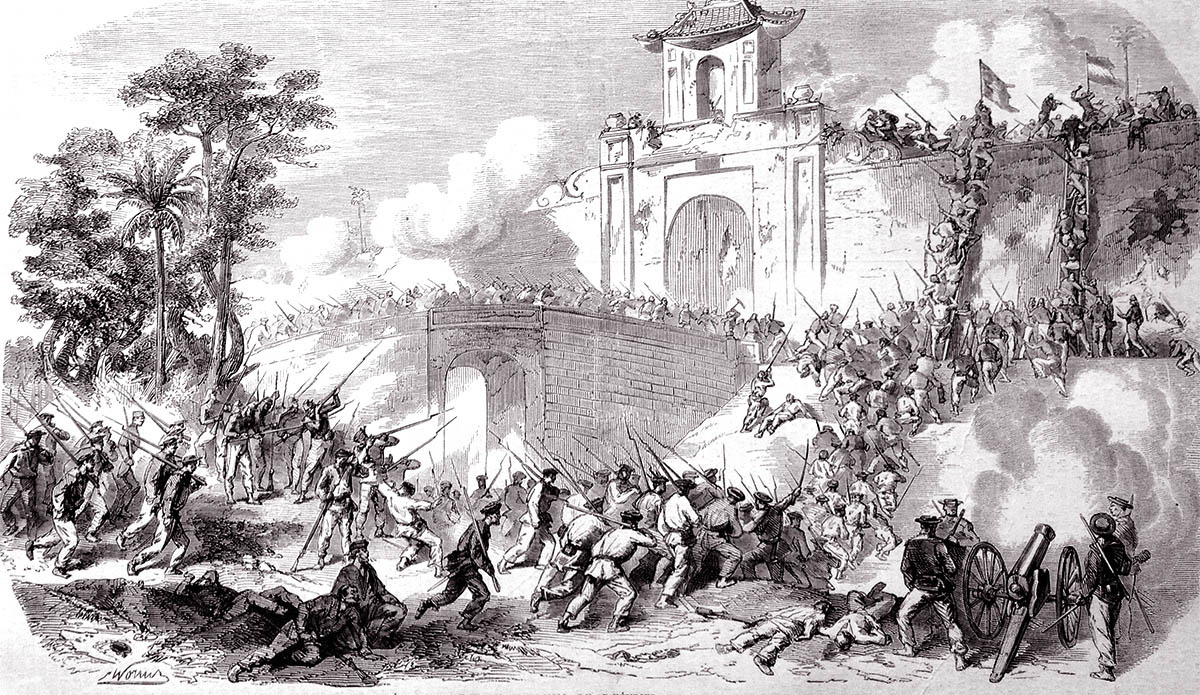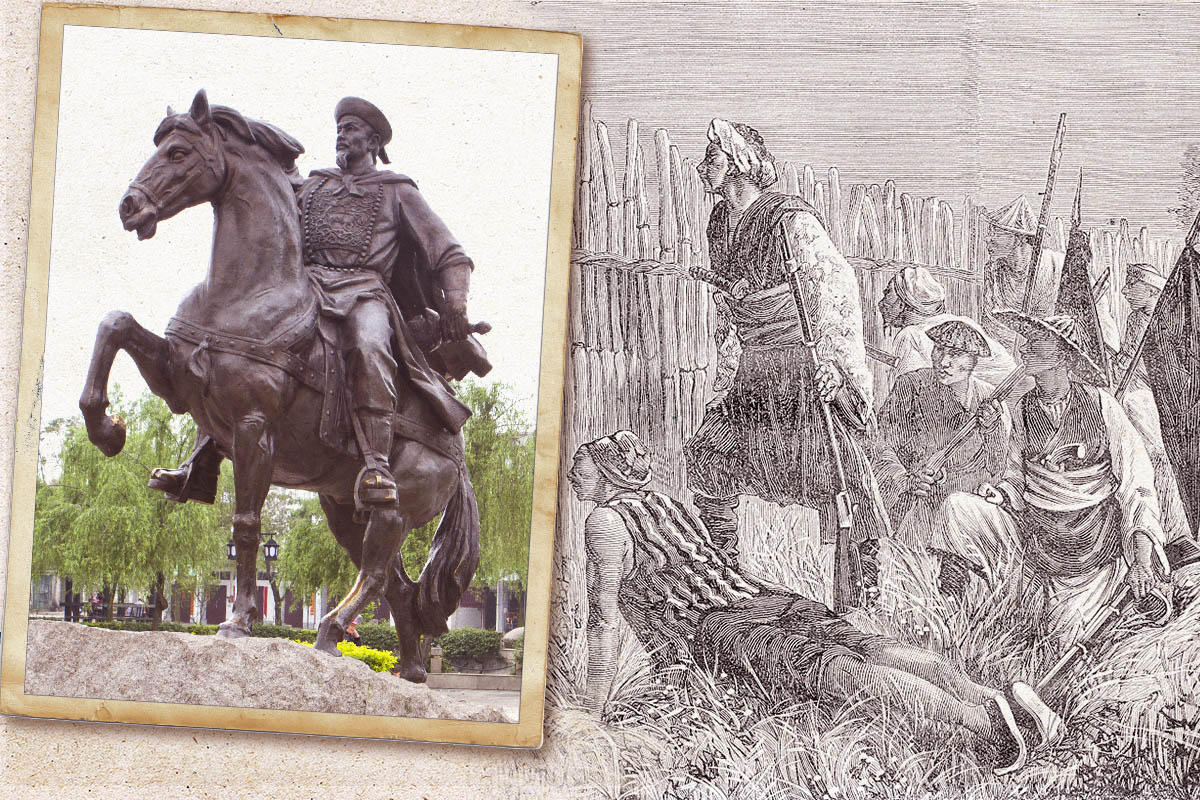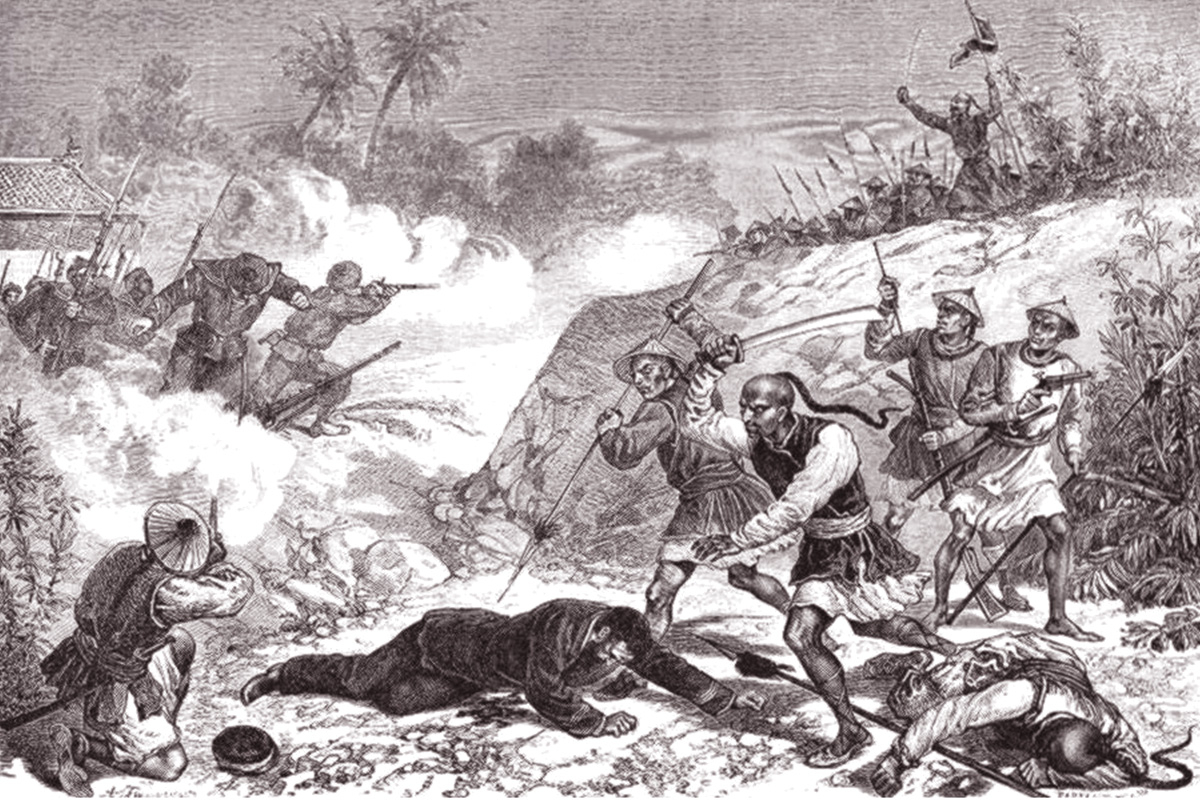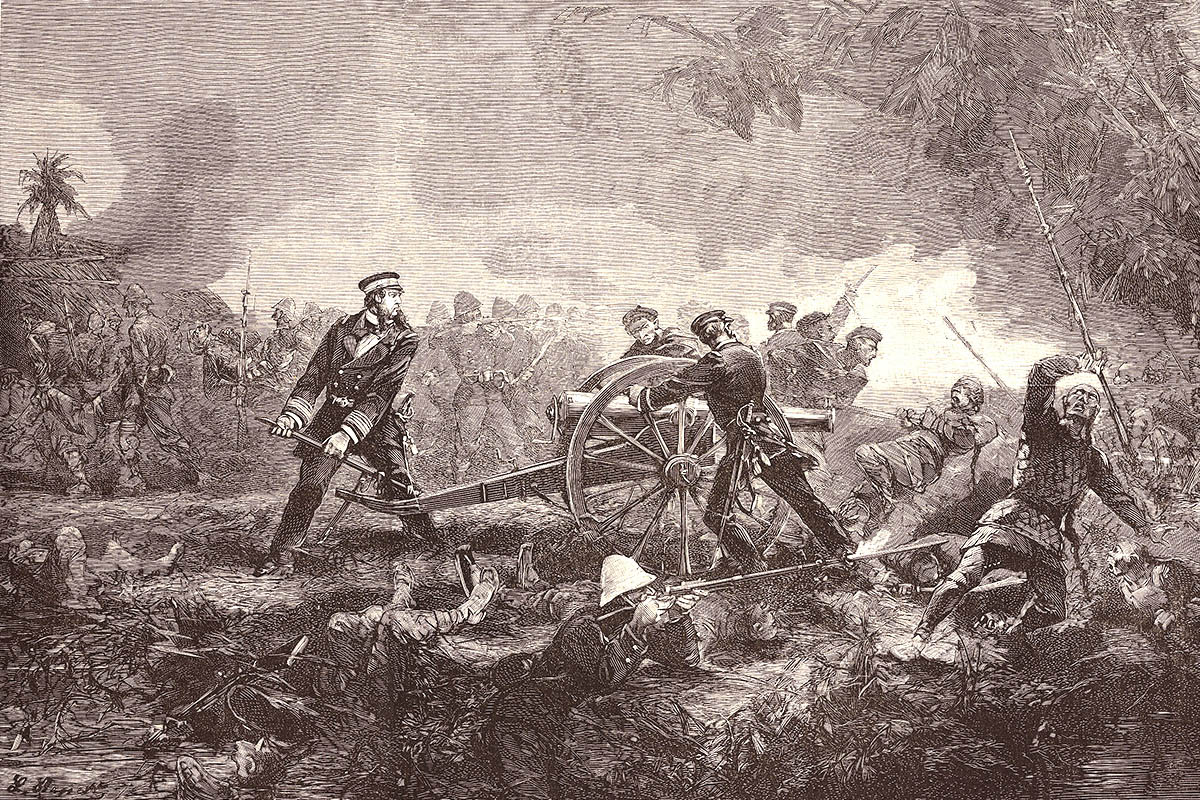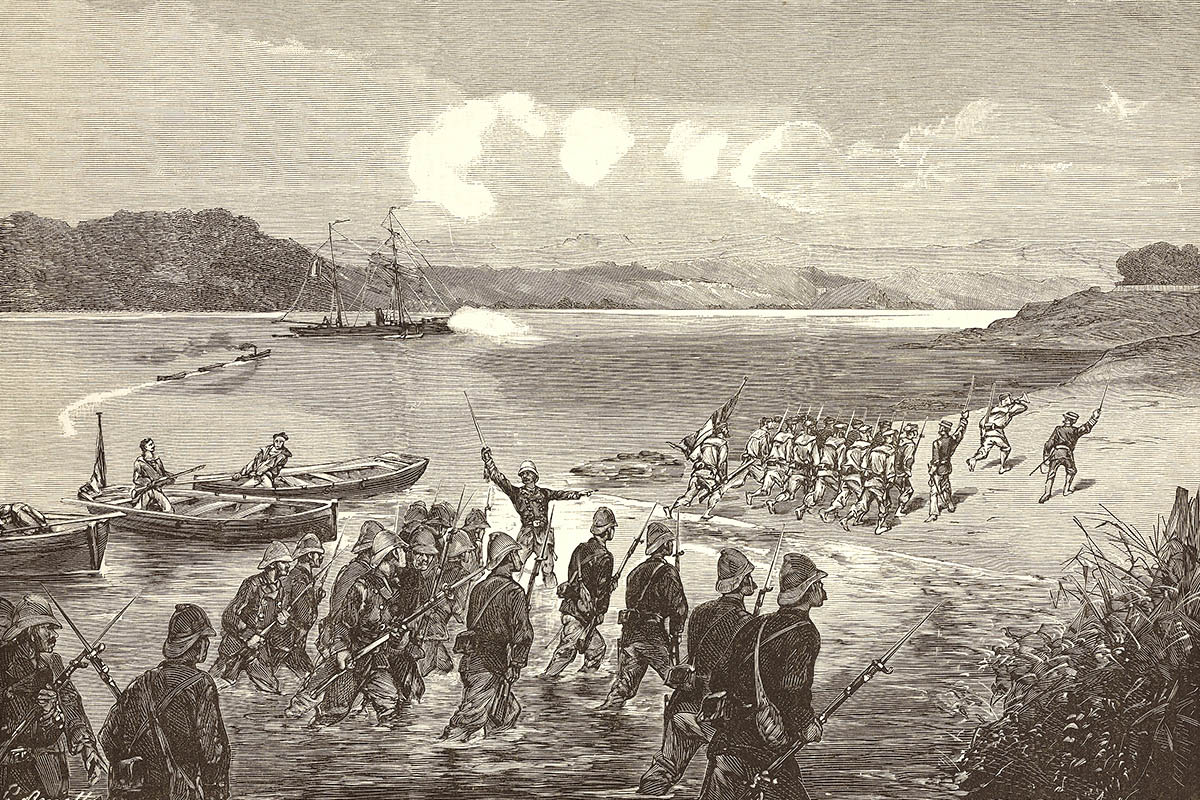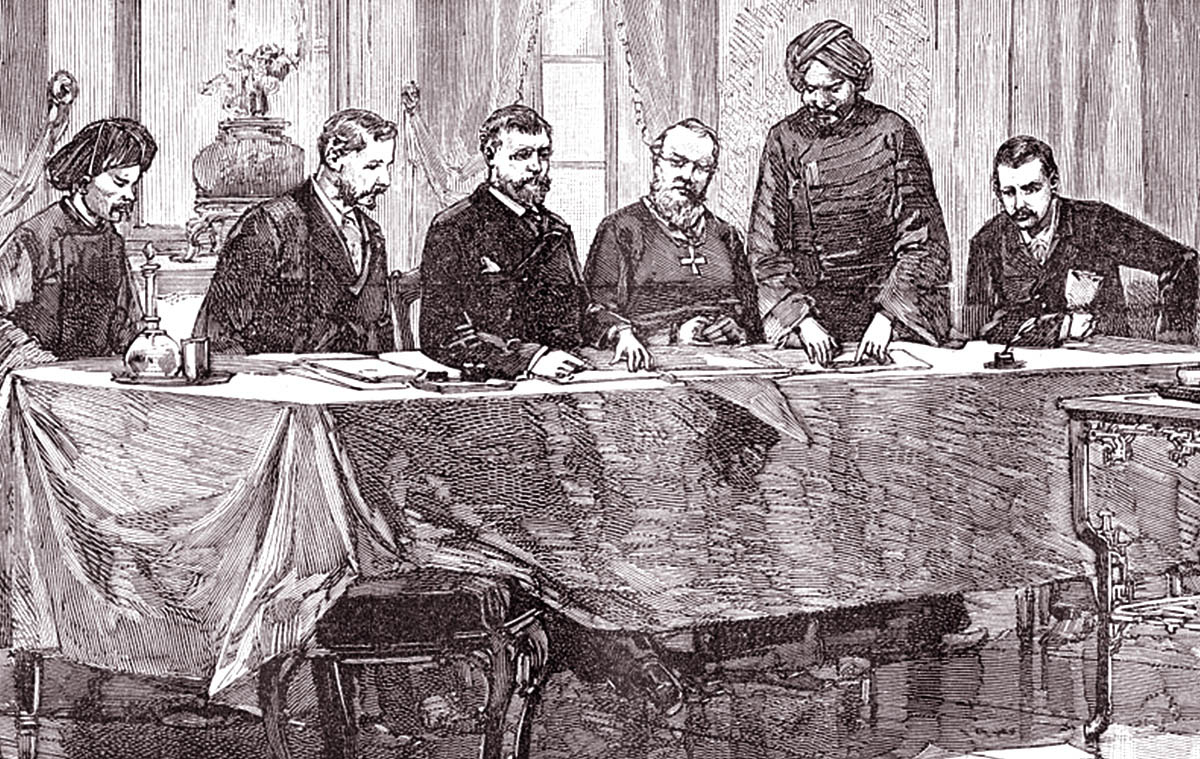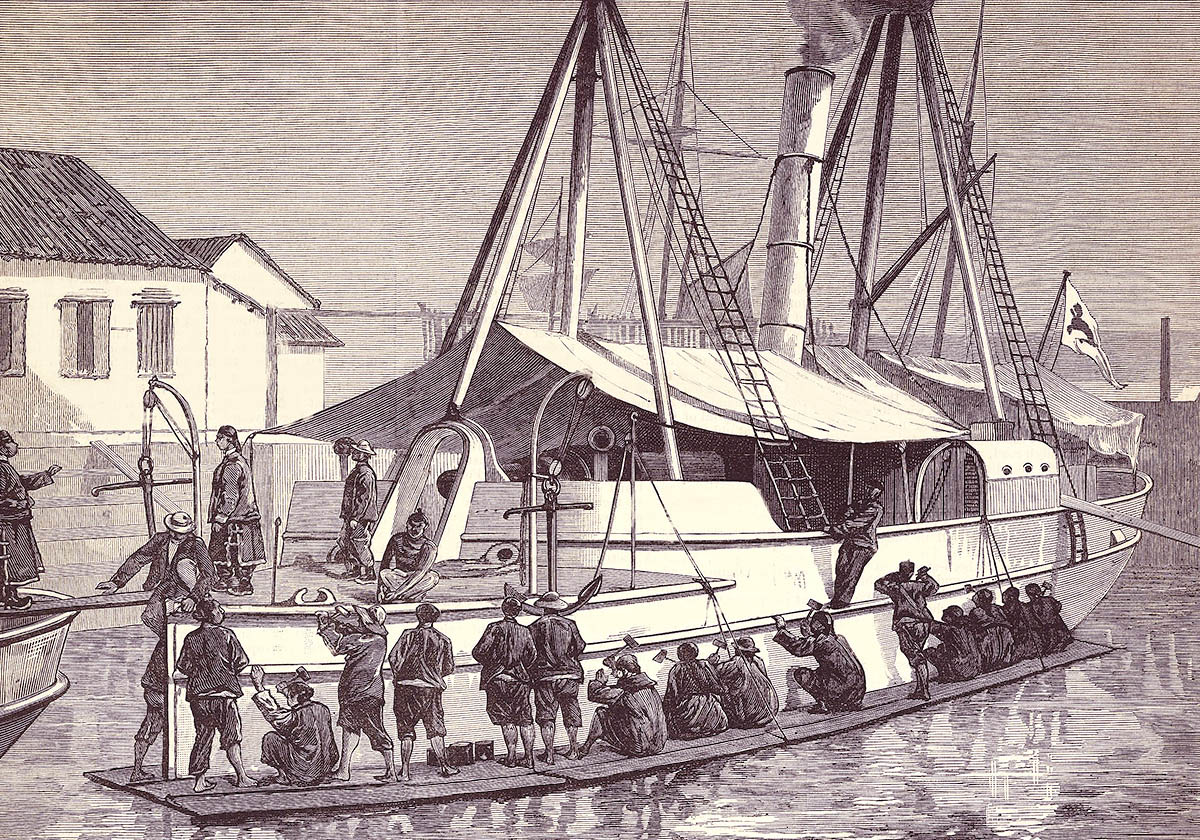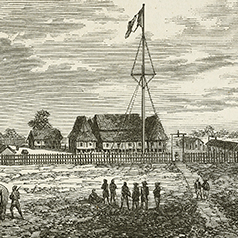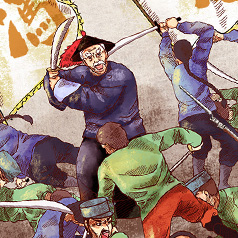Throughout history, China long proclaimed itself the “Supreme Celestial Empire”, and built up a tributary system under which neighbouring, adjoining, or island states paid tribute to it. Starting from the mid-19th century, however, the imperialist powers began to covet China’s tributary states in a bid to step up their capital export and territorial expansion. China became embroiled in various border conflicts. Britain began to exert control over Tibet while vying for Xinjiang (新疆) with Tsarist Russia; Japan, an emerging imperialist power, claimed the Ryukyu Kingdom as its own and renamed it Okinawa; and France strove for dominion over Vietnam, Cambodia, and Laos in Mainland Southeast Asia. Vietnam was forced to sign two Treaties of Saigon with France in 1862 and 1874, ceding its southern provinces to France and allowing French influence to gradually spread northwards towards China’s borderland. The Black Flag Army (黑旗軍), the remnants of the Taiping Rebellion (太平天國) that was active along the Sino-Vietnamese borderland, soon joined forces with the Vietnamese military and civilians under the leadership of Liu Yongfu (劉永福) in resisting the French. The joined forces succeeded in killing French military officers Francis Garnier and Henri Rivière in separate confrontations. In August 1883, France and Vietnam signed the first Treaty of Huế that forced Vietnam to become a French protectorate. Perceiving its vassal state under threat, China prepared for war. Tensions between the two countries ran high.
|
|
What is a tributary state? Which of Qing China’s neighbouring countries were its tributary states? |
|
|
See answer below. |
From the time when the Qing regime was at the height of its power up until the Opium War, the empire had, in addition to its own territory, a vast sphere of influence and many tributary states. However, the Opium War exposed the empire’s weaknesses, and the imperialist powers began to view China’s neighbouring tributary states as fair game for conquest. France started plotting to acquire Vietnam, a tributary state located in Mainland Southeast Asia, to extend its sphere of influence to the adjoining provinces of Yunnan (雲南) and Guangxi (廣西) in China.
From 1858 to 1862, France and Spain used the murders of two Spanish missionaries in Vietnam as a pretext for a joint assault on Vietnam, with the French serving as the primary invasion force. Vietnam was defeated. Pictured is the 1859 French conquest of Saigon (present-day Ho Chi Minh City), a key city in southern Vietnam.
In 1862, France pressured Vietnam into signing the first Treaty of Saigon, which resulted in the ceding of land, opening of ports and inland waterways, and granting of numerous concessions.
The signing of the Treaty of Saigon led to increased French activity in Vietnam. Pictured is a French floating battery moored off Saigon in 1864.
A statue of Liu Yongfu (left) and a depiction of the Black Flags on the frontline of the battle against France (right). Some 3,000 Black Flags were active in the China-Vietnam borderland at the time of the Sino-French War. They joined forces with the Vietnamese army and civilians in resisting the French invasion.
Liu Yongfu and his Black Flag Army was part of the anti-Qing Taiping Rebellion. After the failure of the movement, they fled to Vietnam by crossing the border from Guangxi. Impressed by the Black Flag’s military prowess, the Vietnamese government conferred Liu with an official title and enlisted his help in defending the nation against the French invasion. They achieved multiple victories. Later, the group was recruited into Qing government’s service. After the Sino-French War, Liu played a part in defending Taiwan (台灣) against the Japanese invasion during the 1895 Yiwei War (乙未戰爭).
In 1873, a French force led by the officer Francis Garnier captured Hanoi (河內) and various other cities. Under Liu Yongfu’s command, 600 Black Flags worked with the Vietnamese military to lure Garnier into an ambush outside Hanoi and killed him. Pictured is the scene of Garnier’s death at the hands of the Black Flags.
Garnier’s death was only a minor military setback for France. Its conquest of Vietnam continued. In 1874, Vietnam was forced to sign the second Treaty of Saigon. It granted more concessions to France and declared Vietnam an independent sovereign state that did not subordinate to any foreign power. This in effect denying China’s suzerainty over Vietnam.
The signing of the second Treaty of Saigon only exacerbated French incursions into Vietnam. In February 1883, a French force led by the officer Henri Rivière captured Nam Dinh, a key city in northern Vietnam, an act of aggression that stunned the Vietnamese government. On 19 May, Liu Yongfu led the Black Flag Army to kill Rivière in the Battle of Paper Bridge. The picture shows Rivière (behind the cannon) attempting to rescue a bogged cannon on the battlefield of Paper Bridge.
Rivière’s death prompted France to augment its army in Vietnam. In August 1883, numerous French troops landed in northern Vietnam.
On 25 August 1883, intimidated by the French military, the Vietnamese government signed the first Treaty of Huế, which forced the country to become a French protectorate.
Perceiving the French conquest of Vietnam as a dire threat to its tributary system and border security, China had to respond and prepare for war both on land and at sea. This picture taken in Shanghai (上海) in September 1883 shows Chinese gunships armed and ready for battle. The Sino-French War was on the verge of erupting.
|
|
What is a tributary state? Which of Qing China’s neighbouring countries were its tributary states? |
|
|
In ancient times, tributary states were smaller and weaker countries on the periphery of a larger and more powerful country that they jointly acknowledged as their suzerain. These smaller countries typically offered tribute or became the dominant’s vassals in exchange for protection or reward. While the tributary states in ancient China resembled the colonies or dependent nations controlled by imperialist powers, the tributary system differed from its imperialist counterparts in that it allowed tributary states more autonomy in their economic, political, military, and diplomatic development. This system began in the Han dynasty. In general, China tended to adopt a kid-gloves policy towards its tributary states. When China accepted tributes from them, it tended to offer return gifts of greater value. Also, it rarely intervened in their domestic affairs. Only under special circumstances - such as when the tributary states experienced civil unrest or invasions - would China exert its influence as necessary. Some notable examples of China’s intervention in its tributary states’ domestic affairs during the Ming and Qing dynasties included Ming China’s military aid to Korea when it was invaded by Japan between 1592 and 1598; Qing China’s intervention in the civil war between the Tây Sơn dynasty and the Later Lê dynasty from 1788 to 1789; and Qing China’s military aid to Korea in quelling the Donghak Peasant Revolution in 1894. Qing China had a dozen tributary states: Korea, the Ryukyu Kingdom, Vietnam, Laos, Burma, Siam (Thailand), Khanate of Kokand (in Central Asia), Afghan (Afghanistan), and the Gorkha Kingdom (Nepal), to name but a few. |
Sources of most photos used in this feature piece: Visual China Group and misc. photo sources.




